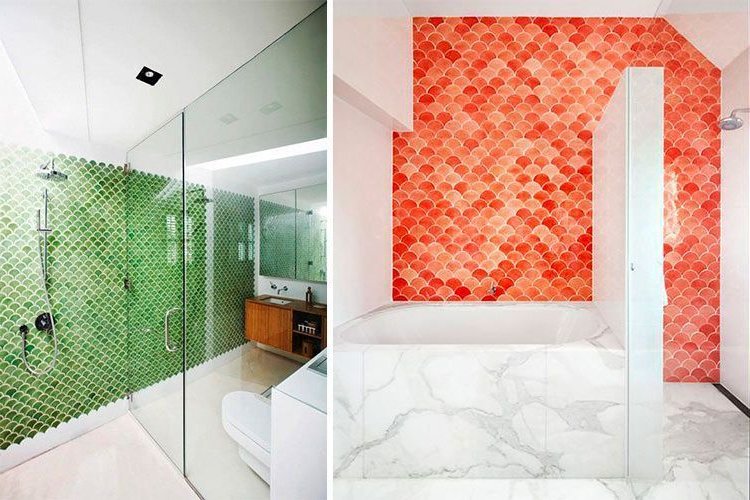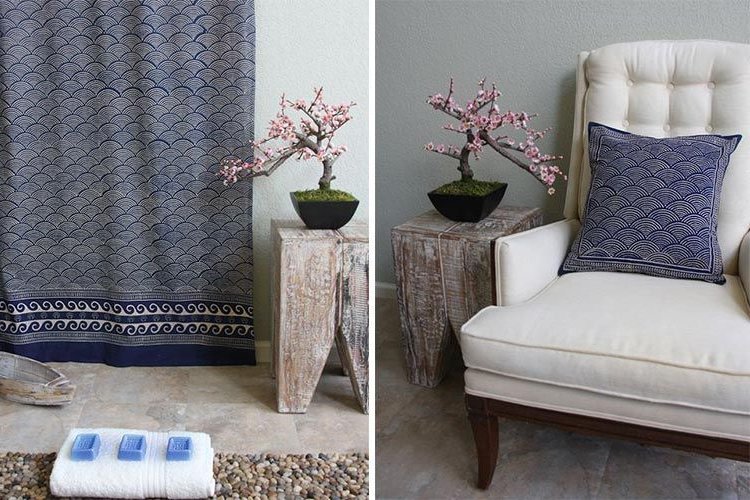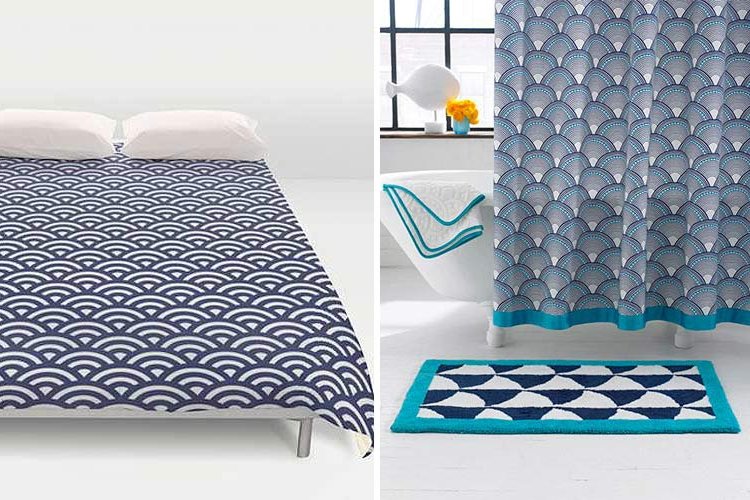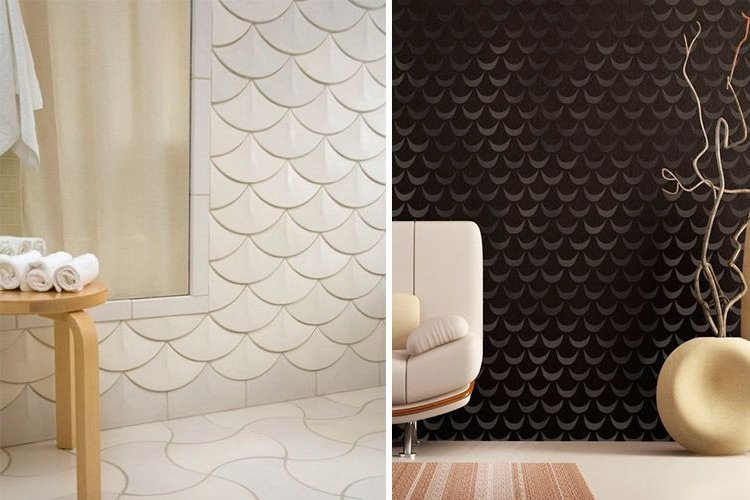Japanese waves in interior design
Japanese waves are a very common decorative motif that you have probably seen applied to many elements, whether they are fabrics, papers, notebooks or cushions.

These waves have their origin in the scales of the Koi fish, a traditional fish of great symbolism in Japanese culture. Their particular and characteristic shape evokes various marine motifs, from the scales of the Asian carp to the sinuosity of the waves in a stormy sea.
At a decorative level it has become a trend nowadays, and has a multitude of applications, from wall and floor tiles, to wallpapers, through a wide variety of textiles. Although it is best to place them with the vertex facing downwards and the wave facing upwards, the truth is that you can see them upside down, backwards or even sideways. Let's see the main options to decorate with them!
Coatings
Japanese waves are often used in bathroom tiles and kitchen fronts, as they bring a lot of vitality to the decor.
Several shades of the same color are applied in areas in contact with water, interspersed in a natural and irregular manner.

Precisely because they are located in water areas, they remind us of the marine environment, very consistent with the context where it is used as a coating. Therefore, if you are looking to give a touch of personality to your bathroom or kitchen, the decoration with Japanese waves is for you.


Pavements
In flooring, Japanese waves are expanding their application styles. We can find tesserae mosaics that evoke Roman pavements, or more contemporary combinations in the form of pure line patterns. It is also common to combine the Japanese wave motif with other formats and materials such as wood, acting in this case as a border.


Wallpaper
In wallpapers we find two trends based on this motif. One of them is characterized by very simple lines (reducing the wave to the minimum expression) and neutral colors, which allows us to achieve serene and relaxing environments.
Alternatively, there are wallpapers with graphic Japanese waves inspired by contemporary Japanese illustration.


Textiles
The textiles, however, are as much for the classic and detailed motif to give a handcrafted touch to the final design, as for the purity of lines to achieve more contemporary designs.
They are used in light textiles such as fine cotton curtains, in cushions and duvet covers, in floor rugs or wall hangings, and are associated with coastal and urban décor.
The pattern in these cases is usually very marked, so if you want to use them in your home, the ideal is to combine them with a neutral and bright color such as snow white to achieve a balanced decoration.



Reliefs
The Japanese wave can serve as an inspirational motif for reliefs, engravings or rotogravures on many supports. For example, it could be carved in wood and used as a bed headboard.


It can also be used as a base motif for the creation of 3D panels or three-dimensional tiles to decorate walls.

Loose panels
A very decorative option for the decoration of a wall is to use the Japanese wave motif as loose panels and make designs according to the consumer's taste. Depending on the material in which it is made, it can also serve as an acoustic insulation system, mitigating the echo or noise transmission to the other side of the wall.

This alternative looks especially good in the decoration of children's rooms and in youth or urban apartments, for the cheerful character they transmit to any environment.


Facade decoration
Japanese waves, due to their ability to attract attention, are perfect for decorating the facades of premises, either permanently or ephemerally (for a specific event). Fixed, flexible, in metal, MDF or paper, they will look spectacular in any street-side location.


Complements
Decorative paintings, cushions, armchairs, lamps... Any object can be a candidate to leave the imprint of the Japanese vibe.



Are you a fan of graphic motifs and character in the decoration or do you prefer plain and neutral colors? When in doubt, we leave you a few more ideas on how to apply the Japanese wave decoration so you can be trendy.













